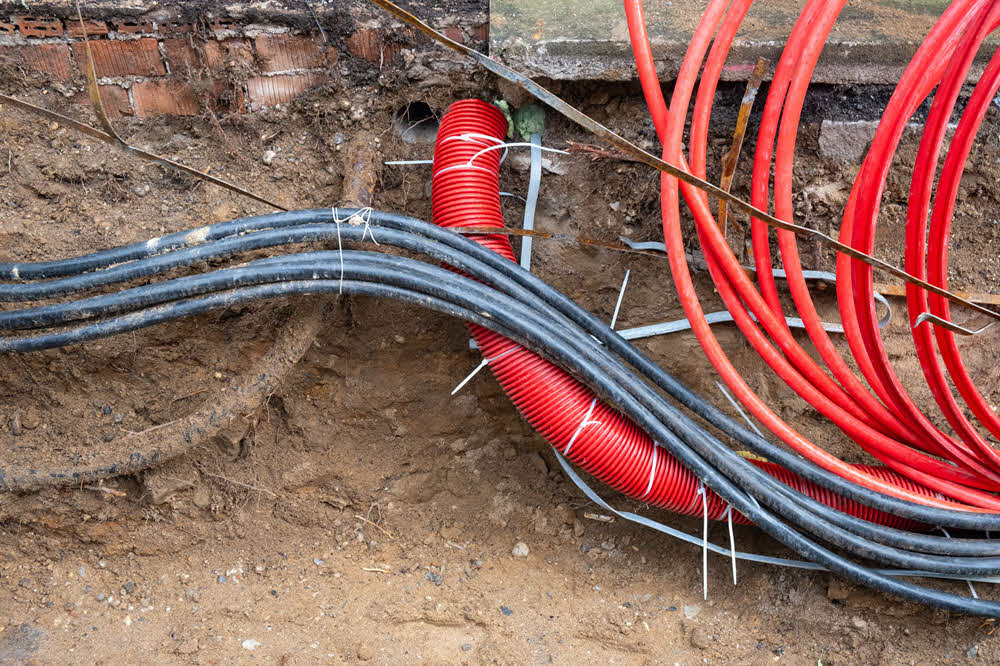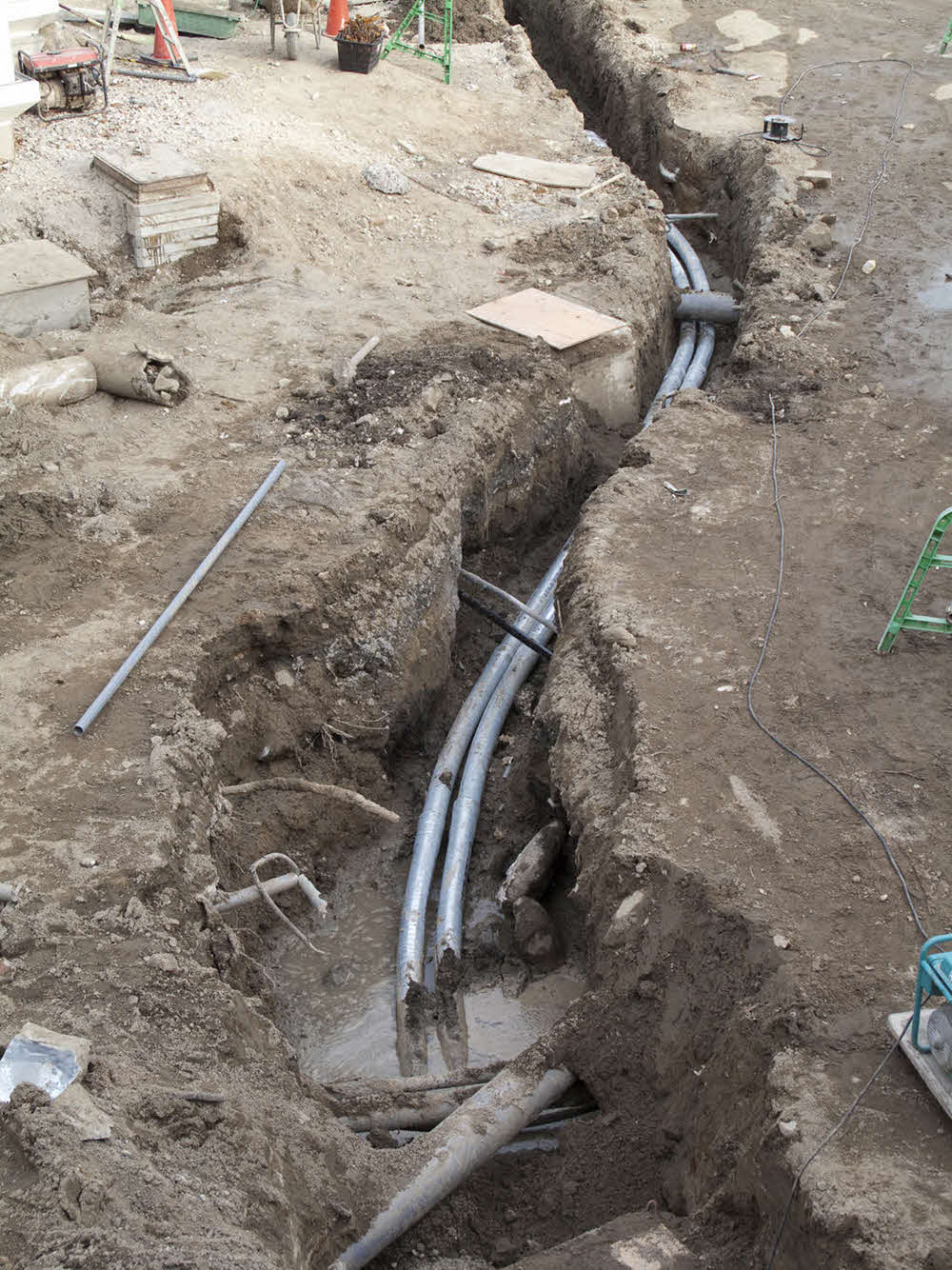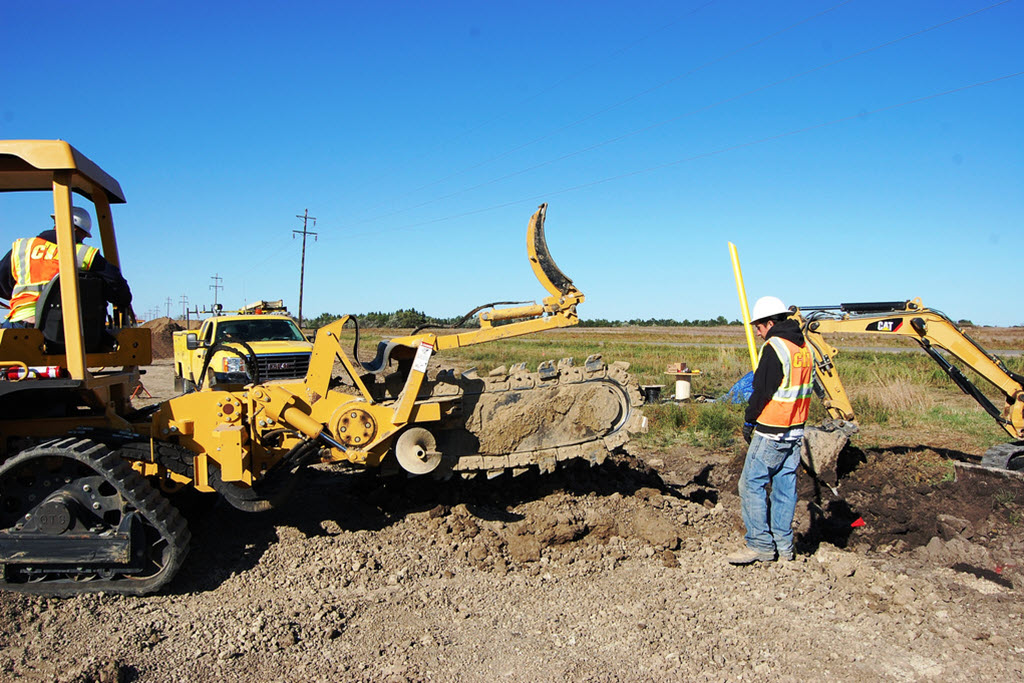Electrical Conduit Servicesin Clay Township MI
Expert Conduit Installation to Support Electrical and Data Systems
We Are Locally Owned & Operated For Over 37 Years
Contact Us Today!
We Serve Businesses In And Around The Following Cities:
About Electrical Conduit Services
Introduction to Conduit for Electrical Underground in Commercial Properties in Clay Township
Electricity is the lifeblood of urbanized society, essential to the smooth operation of all commercial properties. Each day, countless transactions and services rely on the invisible, unceasing flow of this energy. Here in Clay Township, it’s no different, yet the conduits that house this energy often go unappreciated. Today, we spotlight the unsung hero of the electrical world – the Conduit for Electrical Underground, a key element in commercial undertakings within the township. This guide explores its process, benefits, and practical applications, showcasing how the service is pivotal for the smooth functioning of all commercial entities.
Making Sense of Electrical Conduits Underground
At their core, underground conduits are channels that facilitate the movement of electrical wires. These carefully crafted tunnels offer protection to the vulnerable wires against many external factors. An underground electrical conduit plays a crucial role as it shields the wires from physical damage, reduces the risk of electrical fires, and ensures the consistent delivery of power.
Nonetheless, proper underground conduit installation is a complex process that requires expert attention. Trenching for electrical conduit, installing PVC conduits underground, and maintaining a safe distance while running electrical wires near gas lines- all these constitute key steps. Companies such as D&J Contracting have an established record in this niche, ensuring a safe and sound installation process in commercial properties across Clay Township.
Merits of Installing Underground Electrical Conduits
Deeper than the protective aspect, the usage of conduit for underground electrical has a host of advantages to offer. Not only does it promise the safe transmission of electricity, but it also ensures an aesthetic environment free from the web of overhead wires. A fool-proof system of PVC conduit for underground wiring reduces overall maintenance cost and ensures a long-lasting infrastructure. Plus, in emergency scenarios where power lines might be compromised, an underground conduit installation provides added resilience.
In the context of Clay Township, commercial properties thrive on an uninterrupted supply of electricity, so a sound underground conduit system becomes a necessity. For large commercial businesses operating round-the-clock, or for enterprises running delicate laboratory utilities, it leverages a shielded, uninterrupted power supply. Even smaller establishments like cafes find it beneficial as it eradicates the threat of disruptive power cuts.
Real-world Applications within Clay Township
Across Clay Township, numerous commercial entities are reaping the benefits of running an underground electric line. Malls possessing LED signs and cinema houses, busy restaurants with a myriad of electric kitchen appliances, medical facilities running critical life-saving tools, and office buildings hosting numerous equipment all require a stable power source. Without an aptly installed electrical conduit, these entities face the risk of frequent shutdowns and electrical fires.
D&J Contracting has been instrumental in shaping the electric landscape of Clay Township. Their expertise in PVC conduit underground installation provides these businesses with a dependable, reliable solution. Their proficiency includes everything – from running electrical wire near gas lines to creating a trench electrical line. Their effectiveness in executing such tasks has assured establishments of a secure electrical flow, propelling their operations and services.
So, Is the Conduit for Electrical Underground Worth It?
As we look to the future, the importance of employing an efficient system like the conduit for electrical underground in commercial properties becomes increasingly apparent. Its installation may be a significant investment up-front, but the long-term benefits undoubtedly outweigh the costs. The role it plays in uninterrupted power delivery and electrical safety is invaluable.
It’s important that businesses, including those in Clay Township, to engage proficient professionals such as D&J Contracting for the conduit installation. Their team ensures not only the proper execution with regard to running wire in conduit underground and trenching for underground electric, but also lends peace of mind in knowing that electrical safety and service continuity is prioritized.
In essence, electrical conduits underground hold vital importance by promoting resilience and guaranteeing constant electricity supply. More so, the right professional expertise makes the process less daunting and more value-driven in the long run. Regardless of the size or nature of the business, the benefits of adapting to this arrangement are immense, particularly in evolving business landscapes such as Clay Township.
Electrical Conduit Services Gallery


Call Us Today to receive your Free Quote for
Conduit For Electrical Underground in Clay Township
Serving: Clay Township, Michigan

About Clay Township, Michigan
The area was first settled by John Martin in 1805, and the area was originally referred to as Pointe du Chene (Oak Point). In 1826, the area was organized as Plainfield Township, which was named by early settler John K. Smith after his hometown of Plainfield, Vermont. A post office named Plainfield began operating here on April 5, 1826 with Smith serving as the first postmaster. In 1828, the township was reorganized and renamed after attorney and statesman Henry Clay, and the post office was later renamed Clay on December 23, 1835; Smith continued serving as postmaster. The post office was renamed Algonac on August 17, 1843. Algonac incorporated as a village within Clay Township in 1867. The village gained autonomy from the township when it incorporated as a city in 1967.
- Colony Tower Complex
- Harsen House
- LeRoy Smith House
- North Channel Shooting Club
- St. Clair River Informational Designation
- Stewart Farm / Memoir of Aura Stewart
- St. Clair Flats Front and Rear Range Light
According to the U.S. Census Bureau, the township has a total area of 82.47 square miles (213.60 km), of which 35.32 square miles (91.48 km) is land and 47.15 square miles (122.12 km) (57.17%) is water.
The township contains a large portion of water that includes areas along the St. Clair River mouth in the northern Anchor Bay area of Lake St. Clair, which contains numerous channels and canals. Directly across the river is the Walpole Island First Nation in Ontario, which is accessible via the Walpole–Algonac Ferry in downtown Algonac.
The St. Clair Flats State Wildlife Area and the majority of the St. John’s Marsh State Wildlife Area are located within Clay Township. Most of Algonac State Park is located within Clay Township with a small portion extending north into Cottrellville Township.
- Bedore is an unincorporated community located along the southern coast of Harsens Island at 42°33′28″N 82°36′47″W / 42.5578126°N 82.6129630°W.
- Clays Landing is an unincorporated community located at the southern terminus of M-154 on Harsens Island at 42°33′06″N 82°36′16″W / 42.5517016°N 82.6043512°W.
- Forster is an unincorporated community located just west of Bedore at 42°33′40″N 82°37′06″W / 42.5611459°N 82.6182410°W.
- Grand Pointe is an unincorporated community located in the northeastern area of Harsens Island at 42°35′58″N 82°32′43″W / 42.5994788°N 82.5451844°W. The affluent community was settled as early as 1888 by the Grand Pointe Improvement Company, and a post office operated briefly from October 16, 1889 until January 5, 1892.
- Harsens Island is the name of the post office that serves the island and several surrounding islands. Harsens Island was first settled as early as 1779 by James Harsen, who was the area’s first white settler. By 1783, Harsen had purchased the entire island from its native Indian population. As late as 1809, the island was also known as James (also Jacob or Jacobus) Island. The post office began operating under the name Sans Souci on April 24, 1900 and was renamed Harsens Island on December 31, 1960. The post office uses the 48028 ZIP Code.
- Maple Leaf is an unincorporated community located on Harsens Island just southwest of the community of Sans Souci at 42°34′41″N 82°34′11″W / 42.5780902°N 82.5696288°W.
- Miller is an unincorporated community located near the southernmost end of Harsens Island at the end of public road access at 42°32′57″N 82°39′32″W / 42.5492017°N 82.6587976°W.
- Muirs is an unincorporated community located along M-154 on Harsens Island at 42°33′23″N 82°35′14″W / 42.5564238°N 82.5871285°W.
- Pearl Beach is an unincorporated community and census-designated place (CDP) located along the southern end of the mainland at 42°37′36″N 82°35′52″W / 42.6267006°N 82.5976876°W.
- Perch Point is an unincorporated community located along M-29 in the northwestern portion of the township along the border with Ira Township at 42°39′54″N 82°37′13″W / 42.6650333°N 82.6201900°W.
- Pointe aux Tremble is an unincorporated community located along M-29 within the Pearl Beach CDP at 42°37′17″N 82°34′16″W / 42.6214230°N 82.5710196°W. The community was settled in 1904 as a station along the railway about 3.0 miles (4.8 km) west of Algonac.
- Riverside is an unincorporated community located in the southern portion of Harsens Island at 42°33′32″N 82°37′49″W / 42.5589237°N 82.6301859°W.
- Roberts Landing is an unincorporated community located along M-29 near Algonac State Park along the border with Cottrellville Township at 42°39′35″N 82°30′57″W / 42.6597561°N 82.5157415°W. The community was named after its first settler, who arrived here in 1830. The Roberts family settled the area as a popular fishing and hunting destination. A post office operated here from April 29, 1869 until December 15, 1895.
- Sans Souci is an unincorporated community located on Harsens Island at 42°34′52″N 82°33′44″W / 42.5811490°N 82.5621580°W.
As of the census of 2000, there were 9,822 people, 3,934 households, and 2,844 families residing in the township. The population density was 277.0 inhabitants per square mile (107.0/km). There were 5,325 housing units at an average density of 150.2 per square mile (58.0/km). The racial makeup of the township was 97.92% White, 0.20% African American, 0.68% Native American, 0.11% Asian, 0.21% from other races, and 0.87% from two or more races. Hispanic or Latino of any race were 0.85% of the population.
There were 3,934 households, out of which 27.9% had children under the age of 18 living with them, 61.3% were married couples living together, 7.0% had a female householder with no husband present, and 27.7% were non-families. 22.9% of all households were made up of individuals, and 9.2% had someone living alone who was 65 years of age or older. The average household size was 2.50 and the average family size was 2.94.
In the township the population was spread out, with 22.6% under the age of 18, 6.5% from 18 to 24, 28.2% from 25 to 44, 28.8% from 45 to 64, and 13.9% who were 65 years of age or older. The median age was 41 years. For every 100 females, there were 103.6 males. For every 100 females age 18 and over, there were 103.2 males.
The median income for a household in the township was $55,059, and the median income for a family was $63,182. Males had a median income of $48,053 versus $31,923 for females. The per capita income for the township was $27,169. About 2.3% of families and 4.7% of the population were below the poverty line, including 6.7% of those under age 18 and 3.6% of those age 65 or over.
Call Us Today to receive your Free Quote for
Conduit For Electrical Underground in Clay Township
Related Services in Clay Township, Michigan
We Serve Businesses In The Following Zip Codes:
48007, 48015, 48021, 48026, 48035, 48036, 48038, 48042, 48043, 48044, 48045, 48046, 48047, 48048, 48050, 48051, 48066, 48071, 48080, 48081, 48082, 48083, 48084, 48085, 48088, 48089, 48090, 48091, 48092, 48093, 48098, 48099, 48225, 48230, 48236, 48310, 48311, 48312, 48313, 48314, 48315, 48316, 48317, 48318, 48397